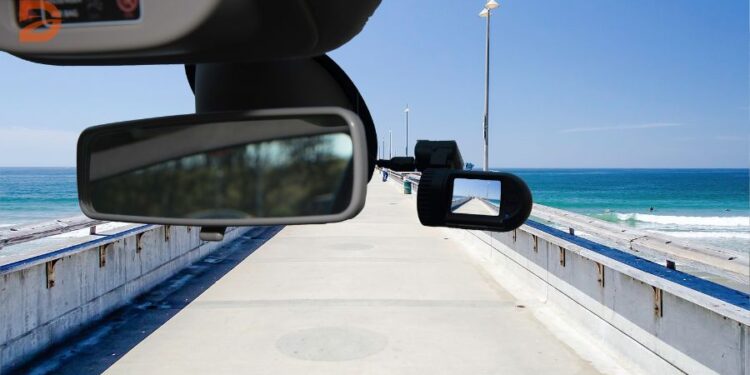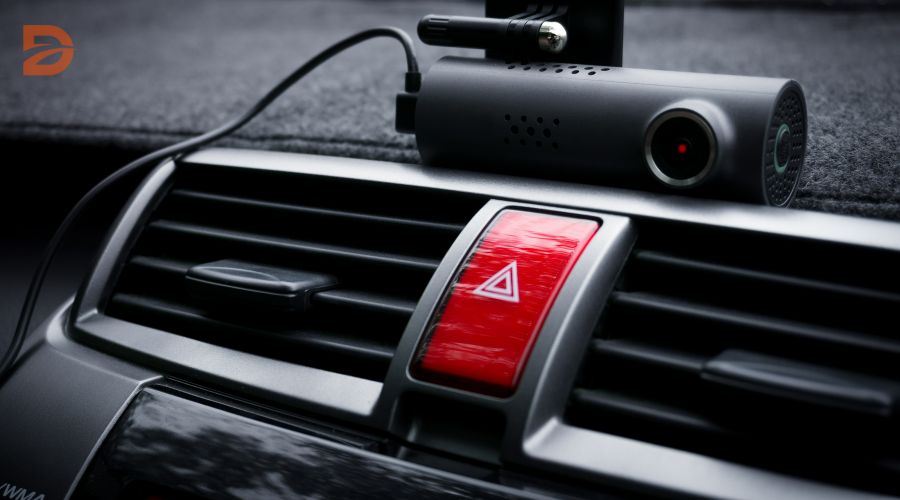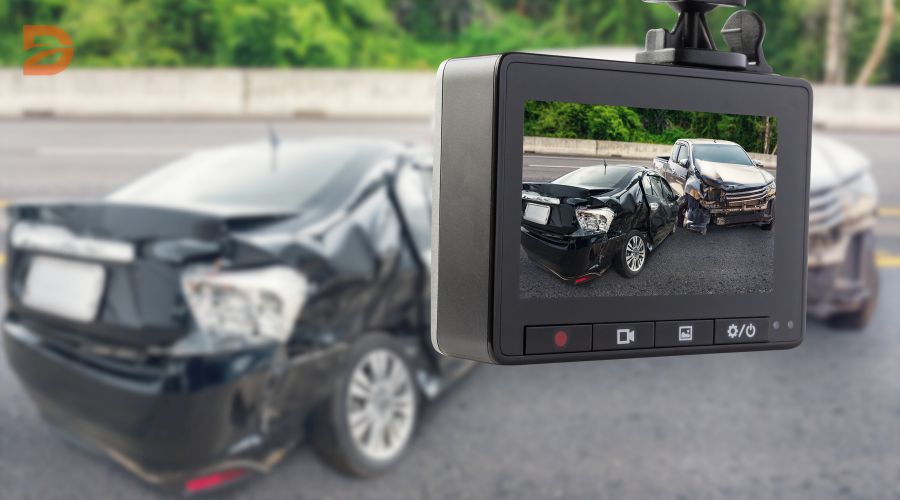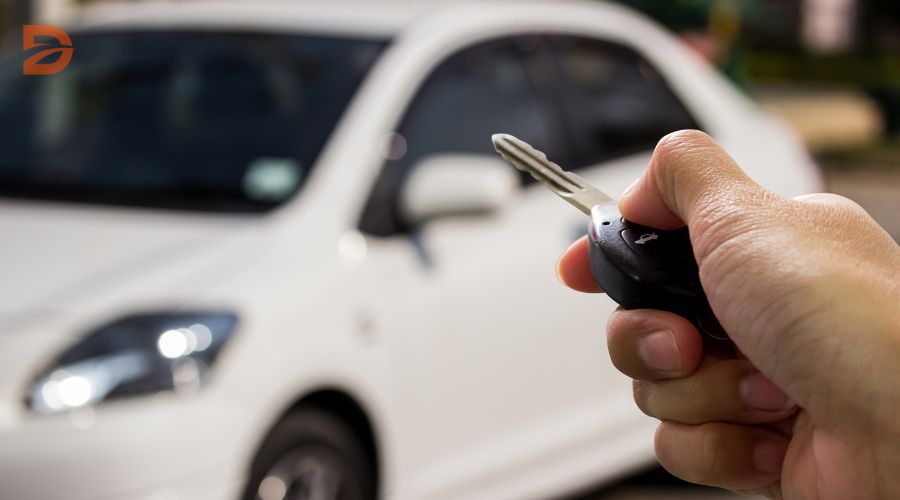In recent years, many drivers have shown a growing interest in purchasing a dashcam to record their journeys. Dashcams are essentially self-contained automotive cameras that can record in either standard or high definition. Generally speaking, a 4K dashcam offers superior quality compared to more affordable cameras that may lack HD image quality. Additionally, it works better for gathering evidence, such as in the event of an accident or incident on the road.
But with the higher price tag, the question remains: is investing in a 4K dashcam worth it? What are the key benefits and drawbacks of these high-resolution cameras compared to their more affordable counterparts? Let’s explore the world of dashcam video quality and determine if 4K is truly a worthwhile upgrade.
Key Takeaways
- 4K dashcams provide greater detail and image quality than standard dashcams but are typically more expensive.
- 4K dashcams consume more power due to the high-resolution footage, but some models can last up to 6 hours on a single charge.
- Pros of 4K dashcams include better image quality, various recording modes, night vision capabilities, and waterproof features.
- Cons of 4K dashcams may include a higher cost and a lack of certain features like GPS tracking or G-sensor in some models.
- Proper maintenance and choosing efficient power consumption can maximize the lifespan and battery life of a dashcam.
Understanding Video Resolution in Dashcams
Fundamentals of Video Resolution
When shopping for a dash cam, one of the key features to consider is the video resolution. Video resolution refers to the number of pixels that make up the video frame, and it plays a crucial role in determining the overall quality and clarity of the footage captured by your dashcam.
The resolution of a video is typically measured in pixels, the higher the pixel count, the higher the resolution. For example, a full HD or 1080p resolution has an average pixel count of 1920×1080, totaling 2,073,600 pixels. In comparison, a 2K or Quad HD (QHD) resolution has a pixel count of 2560×1440, totaling 3,686,400 pixels, while the highest-end 4K or Ultra HD resolution boasts a pixel count of 3840×2160, totaling 8,294,400 pixels.
Another important metric to consider is the pixels per inch (PPI), which measures the number of pixels that fit into one inch of screen space. The higher the PPI, the higher the resolution of the image, and the more detail and clarity you can see.
Pixel count is a crucial factor in determining the overall image quality of your dash cam footage. The higher the pixel count, the more detailed and clear the video will be, making it easier to identify important details such as license plates, street signs, and faces.
| Resolution | Pixel Count | Pixel Dimensions |
|---|---|---|
| Full HD (1080p) | 2,073,600 pixels | 1920 x 1080 |
| Quad HD (2K) | 3,686,400 pixels | 2560 x 1440 |
| Ultra HD (4K) | 8,294,400 pixels | 3840 x 2160 |
Resolution Types in Dashcams
Dashcams come in a variety of resolutions, ranging from the basic 720p to the high-end 4K. While 720p is the lowest resolution available, 1080p Full HD and 2K (2560 x 1440 pixels) are the most commonly used resolutions in dashcams today. The highest resolution currently offered in dashcams is 4K, with a resolution of 3840 x 2160 pixels, providing ultra-clear and detailed footage.
When it comes to dashcam video quality, the terms “Full HD,” “QHD,” and “UHD” are often used to describe different resolutions. Full HD, or 1080p, is the most common and widely adopted resolution, offering a good balance of image quality and file size. QHD, also known as 2K, provides a higher resolution of 2560 x 1440 pixels, while UHD, or 4K, is the highest consumer-grade video resolution available, delivering an exceptional level of detail and clarity.
| Resolution | Pixel Count | Description |
|---|---|---|
| 1080p (Full HD) | 1920 x 1080 | The most popular resolution in dashcams offers high-quality footage at 2.1 million pixels. |
| 2K (QHD) | 2560 x 1440 | A higher-resolution option, providing over 3.6 million pixels for enhanced image clarity. |
| 4K (UHD) | 3840 x 2160 | The highest resolution available in dashcams, capturing footage with an impressive 8.3 million pixels for unparalleled detail. |
Higher resolutions like 2K and 4K require more storage space due to their larger file sizes, but they also offer superior image quality and clarity, making them a valuable investment for those seeking the best possible dashcam footage.
Importance of Video Resolution in Dashcams
When it comes to dashcams, the importance of video resolution cannot be overstated. The higher the resolution, the clearer and more detailed the footage will be, which is crucial for capturing important evidence in the event of an accident or incident.
One of the primary benefits of having a dashcam with high video resolution is the ability to clearly identify details such as license plates, road signs, and facial features. This can be invaluable when providing video evidence to support your case. Clear footage can help establish the facts and provide a reliable account of what occurred, which can be essential in legal proceedings or insurance claims.
Moreover, high-resolution dashcam footage can also serve as a deterrent against criminal activity. Perpetrators are less likely to commit a crime if they know they are being recorded in high definition, as the increased clarity of the footage can help with identification and prosecution.
| Resolution | Pixel Count | Advantages |
|---|---|---|
| 1080p Full HD | 1920 x 1080 | Excellent balance of quality and file size, a popular choice for dashcams. |
| 2K (QHD) | 2560 x 1440 | Higher quality footage than Full HD provides more detail and clarity. |
| 4K (UHD) | 3840 x 2160 | Exceptional image quality, ideal for capturing fine details like license plates, but requires more storage and processing power. |
When selecting a dashcam, it’s essential to consider the importance of video resolution and its impact on the quality of the footage. While higher resolutions like 4K offer the clearest and most detailed images, they may also require more storage space and processing power. Finding the right balance between resolution, storage, and system requirements can help ensure you capture the critical evidence you need while maintaining the overall performance and functionality of your dashcam.
Technical Aspects of Dashcam Video Quality
When it comes to the technical aspects of dashcam video quality, several factors come into play, including lighting and lens, file size and storage, and processing power requirements. Understanding these elements can help you make an informed decision when selecting the right dashcam for your needs.
Lighting and Lens Factors
The lighting conditions and the quality of the lens can greatly impact the video resolution and clarity captured by your dashcam. Low light conditions can affect the visibility of details in the footage, making it harder to see license plates, road signs, and other important information. Dashcams with advanced night vision capabilities or wider-angle lenses (at least 120 degrees) can help improve video quality in challenging lighting situations.
File Size and Storage Considerations
The resolution of your dashcam video has a direct impact on the file size. Higher resolutions, such as 2K (2560 x 1440 pixels) and 4K (3840 x 2160 pixels), capture more details but also require significantly more storage space. It’s important to choose a dashcam with enough storage capacity, either through a memory card or built-in storage, to accommodate your needs. Some dashcams also offer video compression to optimize file size while maintaining quality.
Processing Power Requirements
The processing power of your dashcam is crucial in handling the video resolution you choose. Higher resolutions, like 4K, demand more processing capabilities to ensure smooth playback and avoid any lag or stuttering. When selecting a dashcam, make sure it has the necessary processing power to handle the video quality you require without compromising its performance.
| Resolution | Pixels | Typical Use |
|---|---|---|
| 720p | 1280 x 720 | Basic dashcam footage |
| 1080p | 1920 x 1080 | The most popular dashcam resolution |
| 2K (QHD) | 2560 x 1440 | Higher quality footage than Full HD |
| 4K (UHD) | 3840 x 2160 | Highest-quality dashcam footage |
Dashcam video quality, 4K dashcams
When it comes to dashcam video quality, the debate often centers around the benefits of 4K resolution. 4K dashcams, with their ability to capture footage at four times the resolution of standard 1080p models, offer a range of advantages that make them a compelling choice for discerning drivers.
Capturing High-Quality Video
The primary advantage of a 4K dashcam is its ability to record video with exceptional clarity and detail. With a resolution of 3840 x 2160 pixels, 4K dashcams like the Type S S403 can capture license plates, road signs, and other important details with remarkable precision. This level of video quality can be invaluable when seeking to provide evidence for insurance claims or legal proceedings.
Furthermore, 4K dashcams excel in low-light performance, thanks to features like Wide Dynamic Range (WDR) technology. This ensures that footage remains vibrant and well-balanced, even in challenging lighting conditions.
Versatile and Advanced Features
Beyond their impressive video quality, 4K dashcams often come equipped with a host of advanced features. The Type S S403, for instance, boasts a 136-degree viewing angle, 24-hour surveillance with Park & Record mode, and compatibility with up to 256GB of storage. These features make it a versatile and reliable choice for drivers seeking comprehensive coverage and convenience.
Additionally, 4K dashcams like the Vantrue N4 Pro can offer seamless connectivity with mobile apps, allowing users to easily access and share their recorded footage.
While the higher resolution and advanced features of 4K dashcams may come with a slightly higher price tag, the benefits they offer in terms of video quality, low-light performance, and overall functionality often make them a worthwhile investment for safety-conscious drivers.
Conclusion
In the end, the decision between a 4K dashcam and a 1080P model ultimately comes down to your specific requirements and budget. 4K dashcams provide unparalleled video quality, capturing even the smallest details with exceptional clarity. These high-resolution devices are particularly valuable in urban driving scenarios where license plates, facial features, and other critical evidence need to be recorded with precision.
However, 4K dashcams come at a higher cost and require more storage capacity compared to their 1080P counterparts. If your primary driving is in rural areas or you have a tighter budget, a 1080P dashcam may still offer sufficient quality to meet your needs. These more affordable options can provide satisfactory footage and require less storage space.
When choosing the right dashcam, carefully consider factors like your budget, video quality requirements, storage needs, and intended use cases. By weighing these factors, you can make an informed decision that aligns with your specific driving conditions and provides the level of video quality that best suits your needs, whether that’s the exceptional detail of a 4K dashcam or the more budget-friendly 1080P option.
FAQ
What is the difference between 4K and 1080P dashcams?
4K dashcams offer higher video resolution and better image quality compared to 1080P dashcams. However, 4K dashcams are typically more expensive and require more storage space.
What factors should I consider when choosing a dashcam’s video resolution?
Key factors to consider include the importance of video evidence, the need for detailed footage (e.g., license plates, faces), low light performance, and storage capacity requirements.
What are the different types of video resolutions available in dashcams?
Dashcams come in a range of resolutions, including 720p, 1080p, 2K, and 4K. The most common resolutions are 1080p and 2K, while 4K provides the highest video quality.
Why is video resolution important for dashcams?
Higher video resolution provides clearer footage, which can be crucial for capturing important details like license plates, road signs, and facial features. This can be valuable as evidence in the event of an accident or incident.
How do factors like lighting, lens, and processing power affect dashcam video quality?
Lighting conditions, lens quality, and processing power can all impact the overall video quality captured by a dashcam. Factors like night vision, field of view, and file compression are important considerations.
What are the advantages of a 4K dashcam?
4K dashcams provide high-quality video footage, with better detail and clarity compared to lower resolutions. They also offer features like live streaming, longer battery life, and improved performance in low-light conditions.










